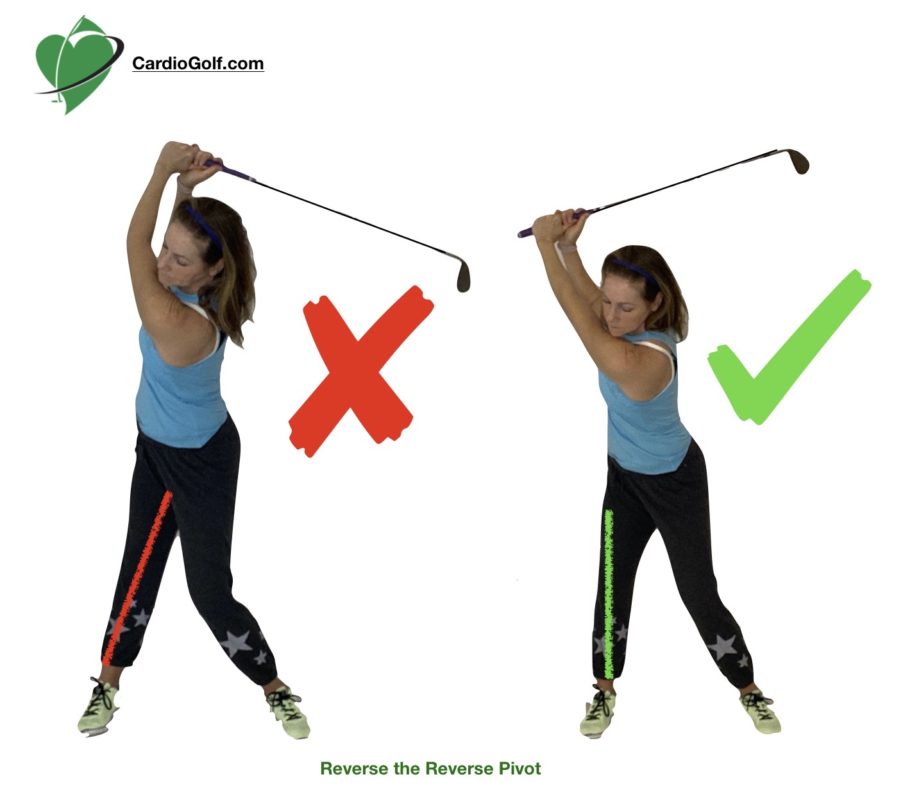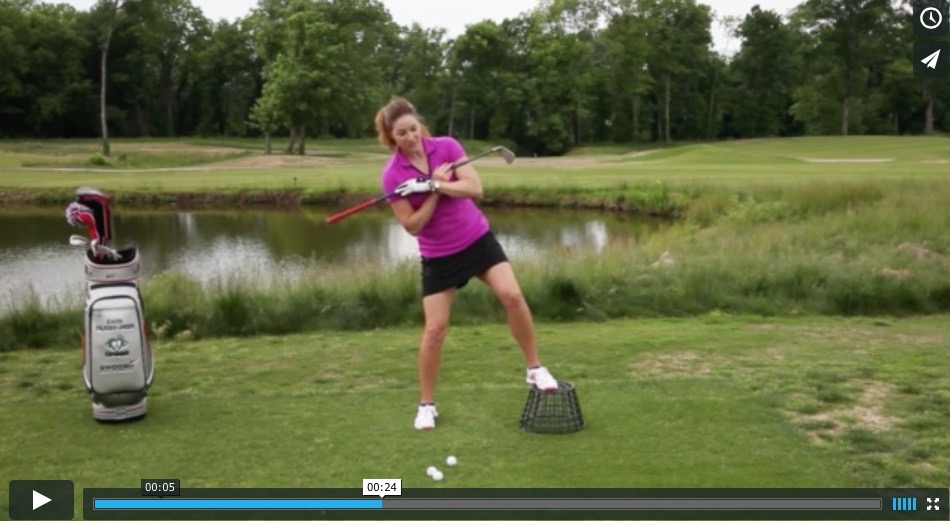Identifying your swing faults and physical limitations are absolutely necessary to building a fundamentally sound golf swing. Identifying and correcting your swing faults and physical limitations should be a focal point in your golf specific fitness program. Playing golf with physical limitations or common swing flaws can cause serious injury to the most vulnerable parts of your body such as the low back, neck, elbows and wrists. Identifying and correcting swing flaws will not only improve your golf game, but also help you prevent the most common golf injuries.
This week we focus on the Reverse Pivot-
A common swing fault among higher handicappers is called the ‘reverse pivot’. Sometimes called ‘reverse spine tilt’ or ‘reverse weight shift’ and is associated with other swing faults such as sway and slide. The term is not important, what’s important is to know what it is and how to minimize it.
The reverse pivot occurs in the backswing when the golfer’s back leg straightens and the body weight is shifted to the front leg and the upper body tilts toward the target. This motion inhibits amount of torque a golfer can create on the backswing because they cannot rotate their body forcing them to make compensations in their swings on the downswing.
-
Swing Drill Video Added to CardioGolf Video Library
Click here to sign up or log into your CardioGolf Complete Access Video Subscription
Swing Drill Video Located in In-Season Training Bonus Series:
052 In-Season Reverse Pivot Correction
Click here to sign up or log into your CardioGolf Complete Access Video Subscription
This reverse pivot is due to compensation caused by weakness of the back leg’s hip, and thigh muscles, specifically the gluteus maximus muscles (buttocks) and the quadriceps. If these muscles are weak, the golfer will not be able to physically handle shifting their weight correctly onto their back leg on the backswing. The golfer will tend to straighten the back leg by locking the knee, which helps support the body weight, and then the golfer will tend to shift the weight to the front leg to maintain balance.
A reverse pivot forces the golfer to start the downswing with the upper body, denying them of enough leverage to maximize clubhead speed. A reverse pivot will also put a tremendous amount of pressure on the lower spine, which can cause pain or injury. 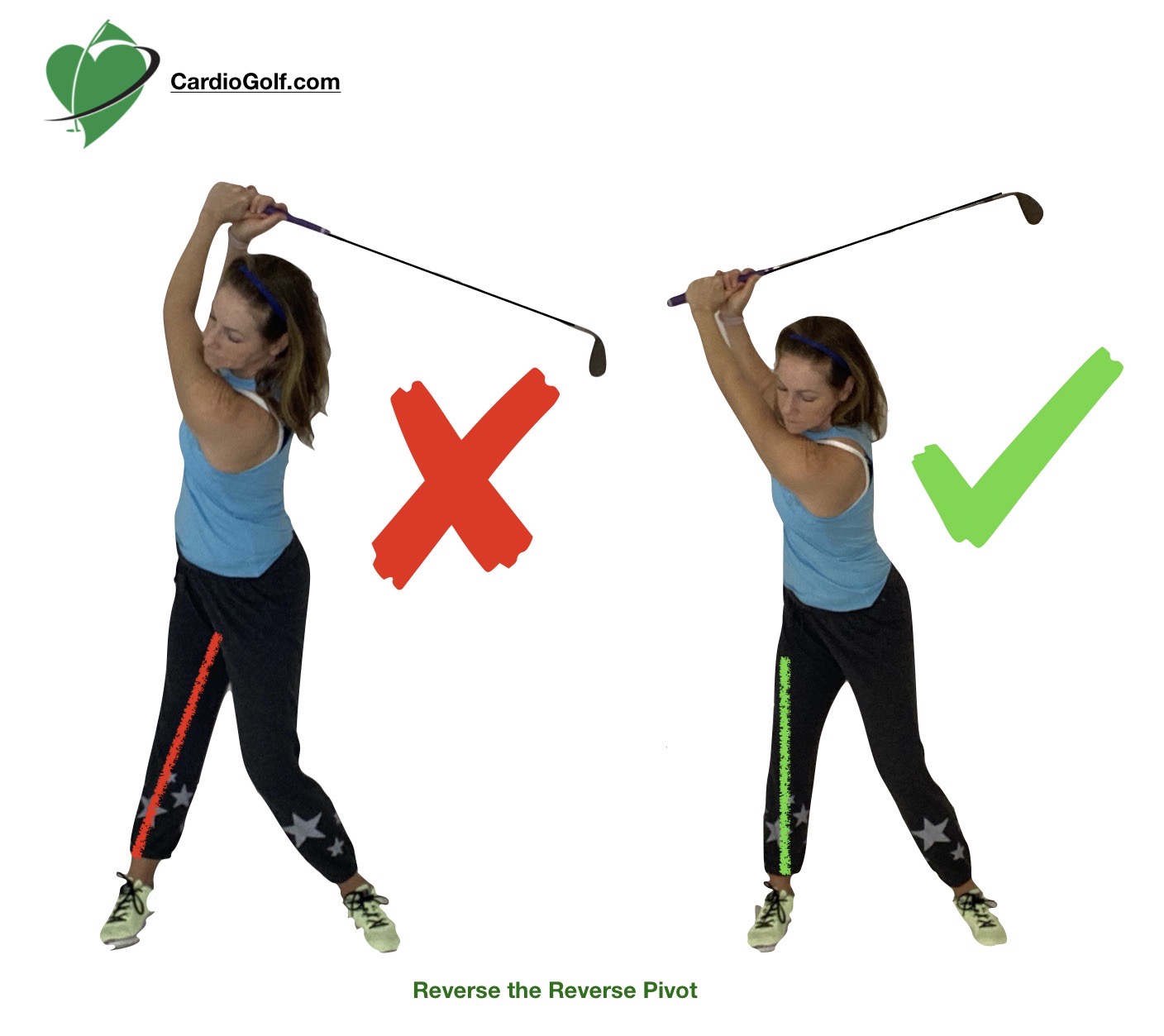
-
Golf-Fitness Individual Exercise Video Added to CardioGolf Video Library
Click here to sign up or log into your CardioGolf Complete Access Video Subscription
Golf-Fitness Individual Exercise Video Located in Off-Season Training Bonus Series:
083 Off-Season Fire Walk with Resistance Band
Most golf professionals will tell you that common swing faults such as poor posture and lack of rotation or a reverse pivot are from physical limitations and until you address those limitations you may never improve. Here is a simple exercise to help improve strength and flexibility in the lower body to help counter the reverse pivot.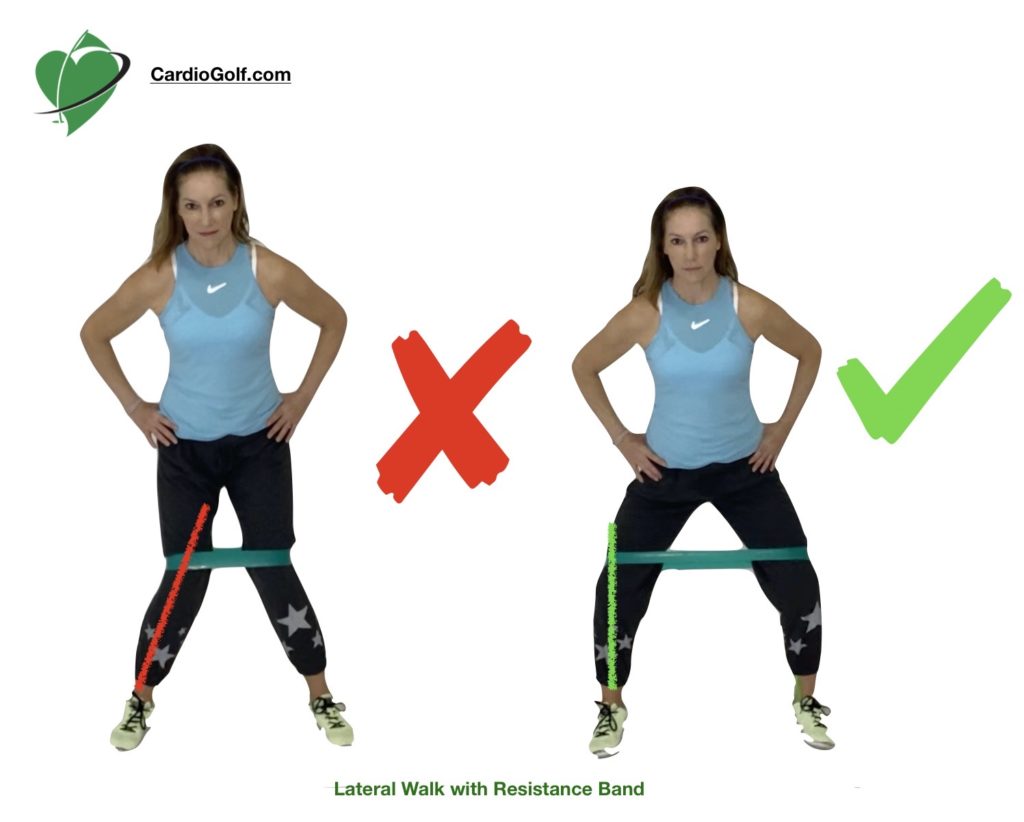
Fire Walk
For this exercise to be effective, you need to use a resistance band. Buy the CardioGolf™ Complete Fitness System, Get a Free Resistance Band!
- Keeping the band flat, not bunched, place it just above each
knees or ankles (depending on the comfort) and wrapped around both legs. - With your feet shoulder width apart, the band should be taut.
- Bend your knees slightly as if you were in your golf stance, in order to activate the glute medius muscles.
- Keep your feet in line with your shoulders, and your hips and shoulders square.
- Maintaining the half-squat position, shift your weight over one leg and take a step laterally (sideways) with the other leg.
- Return to the start position and repeat on opposite leg.
- Alternate stepping side to side with both legs for 8 to 10 repetitions on both sides.
Benefits includes:
- Strengthening the gluteal muscles and hip adductors to withstand force of weight shift.
- Helps train hips to avoid swaying.
- Excellent exercise to warm up before play or practice.
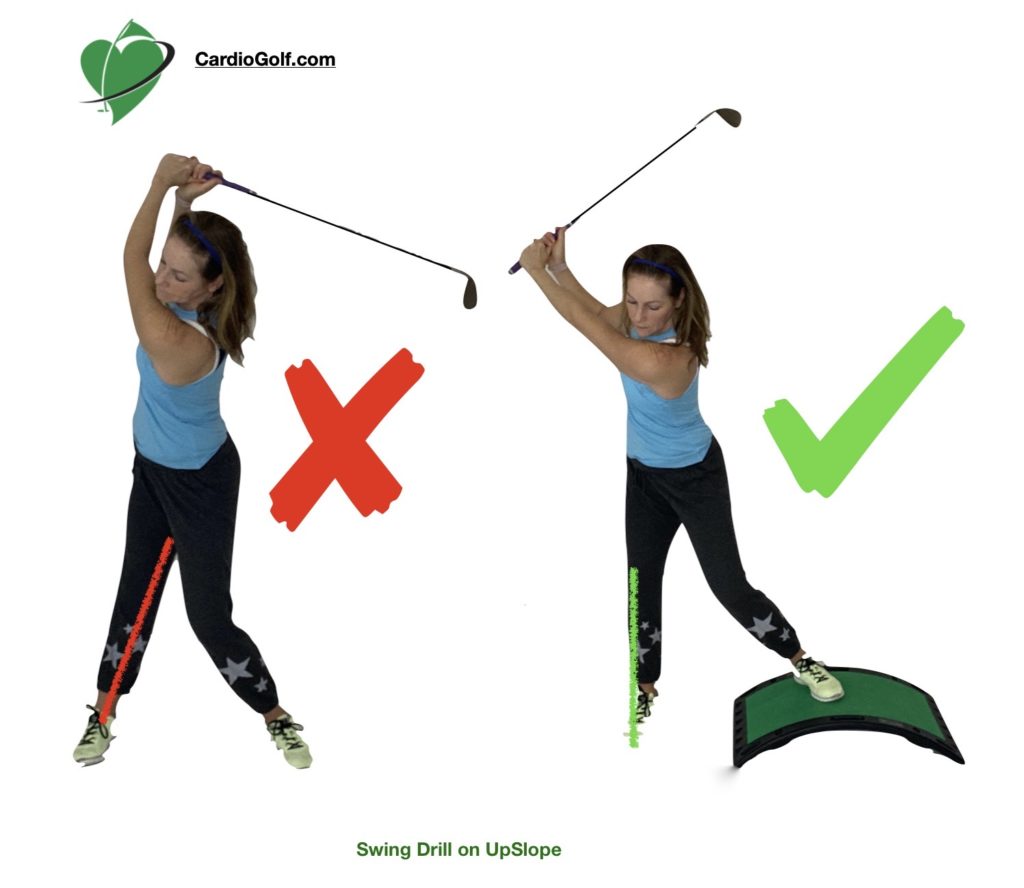
Uphill Lie Drill on CardioGolf Slope
The uphill lie gets you into a powerful position with your weight behind the ball.
- Practice making swings on an uphill lie or put your foot on the CardioGolf Slope shown.
- Stop at the top of your swing and hold the position for 5 to 8 seconds and repeat for 8 to 10 repetitions.
- Feel the weight on the inside of your back foot. Feel your back hip rotated and coiled.
- You should even be able to lift your front foot easily off the ground or step. If not, then you haven’t shifted your weight enough on the backswing.
This drill is especially good for people who tend to reverse pivot or tilt their upper bodies towards the target on the backswing.
Are your physical limitations holding you back from playing your best golf?
Understand and identify your swing faults (if you have any) and the physical limitations that may cause them. Swing faults, which are technical flaws in your golf swing, can be can be caused from physical limitations and or from improper swing mechanics such as lack strength and inflexibility in critical areas of the body. Your flexibility, strength, coordination, balance and stability, which is your body’s ability to maintain certain positions for a length of time, in your golf specific muscles are imperative to making a good golf swing and playing your best. If you have any physical limitations or weaknesses, they will affect the way you swing a golf club. For example, if you have tight hamstring muscles, it will be difficult for you to maintain the correct amount of spine angle during the swing. You may “come out of the shot” or “stand up” through impact, which can cause topped or weak shots. If you lack strength or flexibility in your hips or buttocks, you may not be able to shift your weight properly and as a result lose power and consistency.
Identifying your swing faults and physical limitations are absolutely necessary to building a fundamentally sound golf swing. Identifying and correcting your swing faults and physical limitations should be a focal point in your golf specific fitness program. Playing golf with physical limitations or common swing flaws can cause serious injury to the most vulnerable parts of your body such as the low back, neck, elbows and wrists. Identifying and correcting swing flaws will not only improve your golf game, but also help you prevent the most common golf injuries.
(Excerpt from Golf Fitness by Karen Palacios-Jansen and Golf Fitness Magazine Contributors).
To read more about golf fitness check out the Golf Fitness book available at Amazon.com.
Buy the CardioGolf™ Complete Fitness System, Get a Free Resistance Band!
Buy a CardioGolf, Get a Free Resistance Band!
While supplies last, we’re offering a free resistance band with the purchase of a CardioGolf™ Complete Fitness System. If you need another CardioGolf™ Complete Fitness System, or a gift for friend or family member, take advantage of this offer!
Resistance bands are a great alternative for golfers who don’t want to use free weights or machines. They come in a variety of resistances, including light, medium and heavy, and you can adjust the intensity of your resistance band by giving the band more or less slack.
You can even use multiple bands at once to increase the challenge. With free weights and machines, your muscles can quickly adapt to movements you do often, halting your fitness progress. Adding variety to your workouts is key for challenging your muscles.
Try this CardioGolf Resistance Band Workout for golfers to strengthen, lengthen and tone your body and golf swing.
Buy the CardioGolf™ Complete Fitness System, Get a Free Resistance Band!
While supplies last, we’re offering a free resistance band with the purchase of the CardioGolf™ Complete Fitness System. If you need another CardioGolf™ Complete Fitness System, or a gift for friend or family member, take advantage of this offer!
Share this Post

